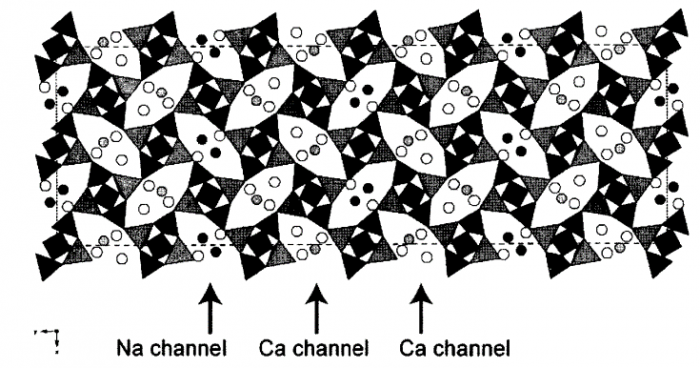“Elastic Behavior of Zeolite Mesolite under Hydrostatic Pressure”
- Authors
Y. Lee*, Y. Lee, D.-H. Seoung Y.-N. Jang
- Journal
Economic and Environmental Geology (자원환경지질)
Vol.42, pp.509-512, 2009.10 - DOI
Abstract
Powder diffraction patterns of the zeolite mesolite ($Na_{5.33}Ca_{5.33}Al_{16}Si_{24}O_{80}{\cdot}21.33H_2O$), with a natrolite framework topology were measured as a function of pressure up to 5.0 GPa using a diamond-anvil cell and a $200{\mu}m$-focused monochromatic synchrotron X-ray. Under the hydrostatic conditions mediated by pore-penetrating alcohol and water mixture, the elastic behavior of mesolite is characterized by continuous volume expansion between ca. 0.5 and 1.5 GPa, which results from expansion in the ab-plane and contraction along the c-axis. Subsequent to this anomalous behavior, changes in the powder diffraction patterns suggest possible reentrant order-disorder transition. The ordered layers of sodium- and calcium-containing channels in a 1:2 ratio along the b-axis attribute to the $3b_{natrolite}$ cell below 1.5 GPa. When the volume expansion is completed above 1.5 GPa, such characteristic ordering reflections disappear and the $b_{natrolite}$ cell persists with marginal volume contraction up to ca. 2.5 GPa. Further increase in pressure leads to progressive volume contraction and appears to generate another set of superlattice reflections in the $3c_{natrolite}$ cell. This suggests that mesolite in the pressure-induced hydration state experiences order-disorder-order transition involving the motions of sodium and calcium cations either through cross-channel diffusion or within the respective channels.












